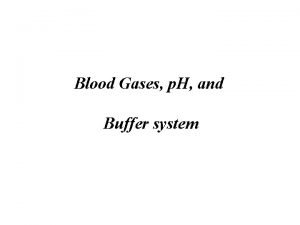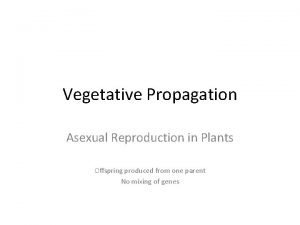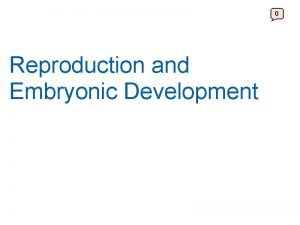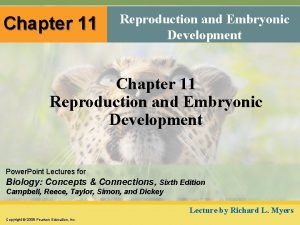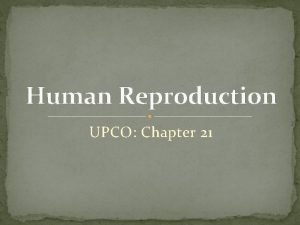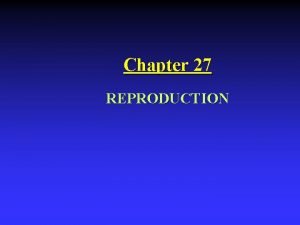Asexual Reproduction UPCO Chapter 19 Asexual Reproduction Results















- Slides: 15

Asexual Reproduction UPCO: Chapter 19

Asexual Reproduction • Results from mitotic cell division • One cell (the parent cell) divides into 2 identical daughter cells. • The new offspring are IDENTICAL to the parent in every way • More common in invertebrate animals • Types of asexual reproduction are: • • • Binary fission Sporulation Budding Regeneration Cloning Vegetative propagation

Do Now… Answer questions # 1 -3 on page 329.

Binary Fission • Simplest type of asexual reproduction • One cell divides to form 2 daughter cells • 2 daughter cells are exactly like parent cell • Nucleus and cytoplasm divide equally • Amoebas, paramecium, bacteria reproduce this way

Do Now… Answer questions #1 -2 on pages 329, 330.

Budding • A new organism develops as an outgrowth of the parent • the new organism is called the bud • It is a tiny duplicate of the parent • The cytoplasm does not divide equally, but the nucleus does • The bud usually separates from the parent and forms its own colony • This occurs in hydras and yeasts

Do Now… Answer questions # 1 -3 on page 330.

Sporulation • Spores contain a small amount of cytoplasm and a nucleus • They are surrounded by a tough protective covering • They are able to survive in unfavorable conditions • When conditions become favorable they develop into a new organism • Mosses, molds, mushrooms, and ferns go through sporulation

Do Now… Answer questions # 1, 2 on page 330.

Regeneration • Development of a new organism from part of the parent • Replacement of lost body parts • Occurs mostly in invertebrates • Occurs in planaria, starfish

Do Now… Answer questions # 1, 2 on page 331.

Vegetative Propagation • Part of a plant (root, stem, leaf) grows into a new plant • New plant is exactly like the parent plant • Seedless fruits and vegetables are reproduced this way • It is fast, easy, and usually very successful • Can occur artificially or naturally • Naturally- runners, tubers, rhizomes, bulbs • Artificially- cuttings, grafting

Types of Vegetative Propagation

Do Now… Answer questions # 1, 2 on page 332.

Do Now… • Complete the chart on page 336. • Answer all questions on pages 337338. • There will be an Exam on Friday. • STUDY, STUDY!!!
 The disadvantages of sexual reproduction
The disadvantages of sexual reproduction Sexual reproduction and asexual reproduction
Sexual reproduction and asexual reproduction Asexual vs sexual reproduction venn diagram
Asexual vs sexual reproduction venn diagram üpco
üpco üpco
üpco Chapter 19 asexual reproduction answer key
Chapter 19 asexual reproduction answer key Dahlia asexual reproduction
Dahlia asexual reproduction Examples of asexual reproduction
Examples of asexual reproduction Segmentation of nematoda
Segmentation of nematoda Parthenogenesis in mammals
Parthenogenesis in mammals Types of asexual reproduction and examples
Types of asexual reproduction and examples Layering asexual reproduction
Layering asexual reproduction Types of asexual reproduction
Types of asexual reproduction Asexual reproduction
Asexual reproduction Gastrula
Gastrula Sexual and asexual reproduction
Sexual and asexual reproduction



